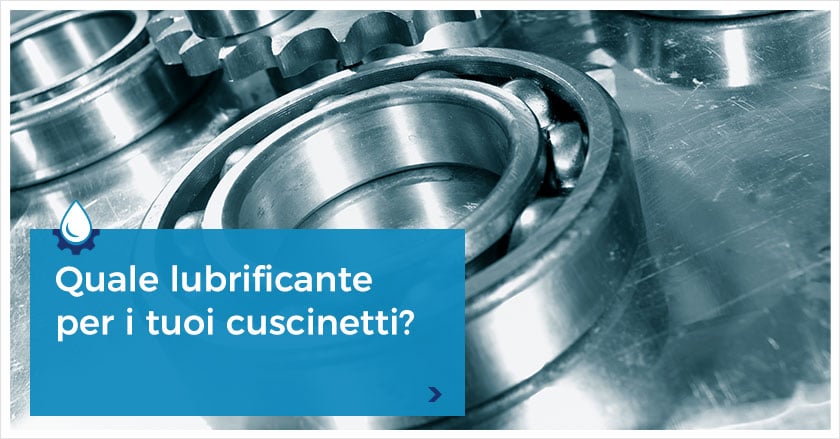
Which lubricant for your bearings?
If you design mechanical components and deal with bearings on a daily basis, it is important that you have a thorough understanding of the lubrication conditions and the characteristics of the lubricants to be used, in order to improve performance and extend the life of your project.
The dynamic viscosity of bearing grease and its adhesiveness, for example, are two very important characteristics that not all lubricants have to an extent suited to their intended use and which should, in any case, be properly balanced.
When choosing a lubricating grease, there are different types: lithium grease, white lithium grease, Teflon grease, PTFE grease and so on ... Yet, these identifications are rather generic and lacking in technical content. Being aware of the conduct of a lubricant is fundamental for the destiny of your project and at the same time, can help you orient the choice towards a targeted solution, limiting wasted time and money.
The dynamic viscosity of a bearing grease and its adhesiveness are two aspects of fundamental importance, since they directly affect the coefficient of friction and the permanence on the rolling elements during rotation.
Why measure grease viscosity for bearings and adhesiveness?
The viscosity of a bearing grease and its adhesiveness are fundamental characteristics in the choice of a lubricant given that not analysing (or doing so incorrectly) could have truly catastrophic consequences on the functionality of the machinery.
But how exactly do you measure? Is the information on the datasheets enough? Is it possible to experimentally verify such values?
Let's start by answering the last question: yes! But before I tell you how it is possible to prove the viscosity value of a bearing grease and its adhesiveness, I'll explain why it is important to do so!
Not only can you characterise the viscous structure and its lubricating power but you can also evaluate the dynamic friction at different speeds, optimising the basic formulation of the lubricant based on the context of use and evaluating performance as the temperature varies, in a range ranging from -50 to +200° C.
Grease viscosity for bearings and adhesiveness: the test
Lithium grease, white lithium grease, Teflon grease, PTFE grease ... we have already seen that there are many variants of a lubricating grease but to understand which one may best suit your needs, it is important to know and analyse the specific characteristics.
Improving the adhesion of a lubricant to the rolling elements, reducing energy absorption, for example, is certainly a very useful operation for your rolling bearings but at the same time, not easy to achieve. Only an accurate formulation of the lubricating grease can guarantee such a condition. Yet, for this to happen, it is essential to know the dynamic viscosity and adhesiveness of your lubricant to optimise the performance not only of the bearings but of numerous other mechanical components such as:
- Gearmotors
- Male or ball valves
- Pneumatic cylinders and valves
- Kinematics in metal/metal sliding friction
- Kinematics in metal/rubber sliding friction
- Kinematics in metal/plastic sliding friction
For a free viscosity and adhesiveness test of the bearing lubricating grease you are using, fill out the form below!



